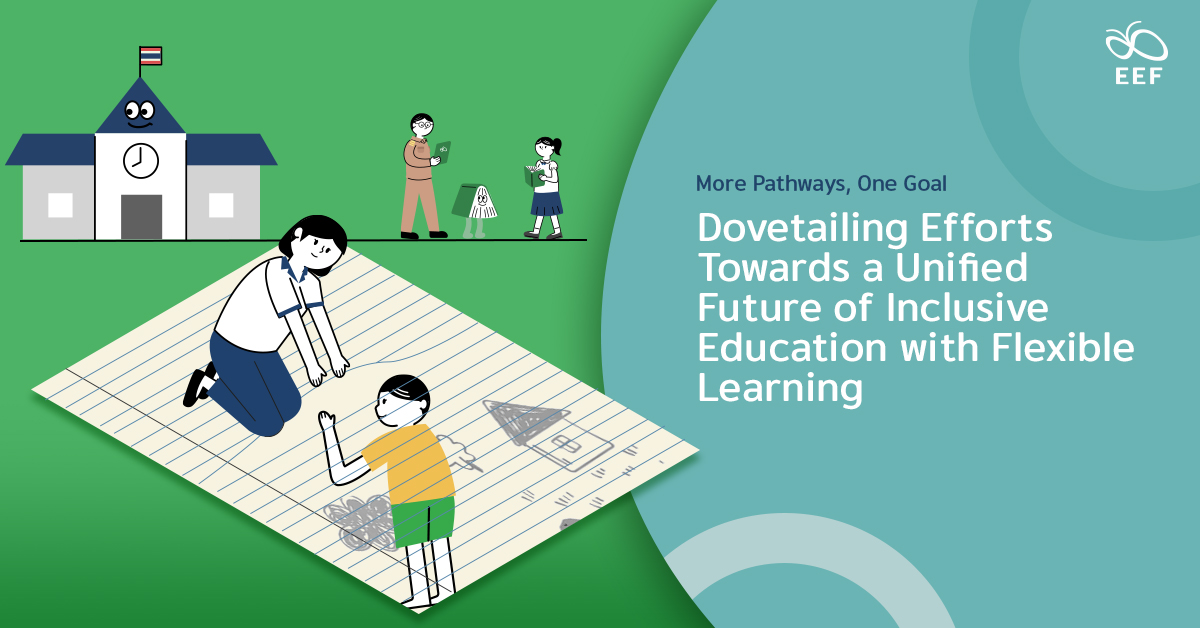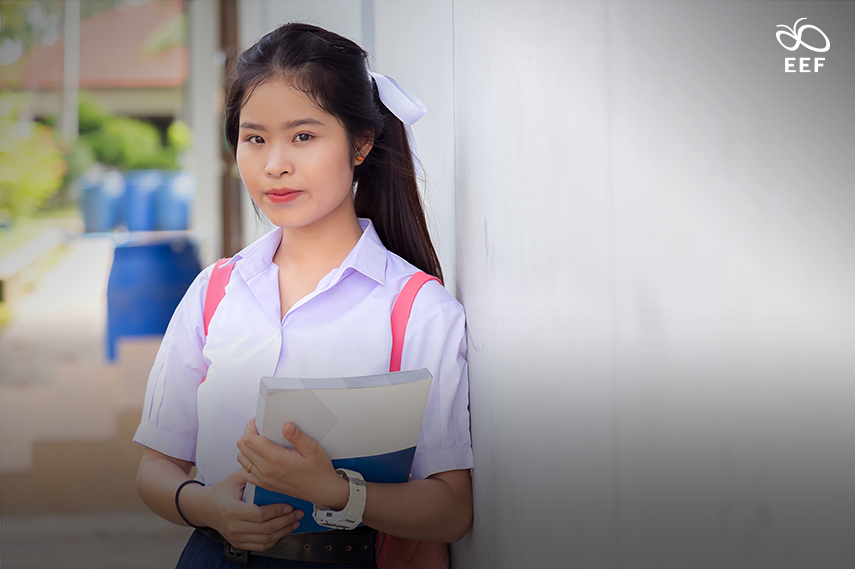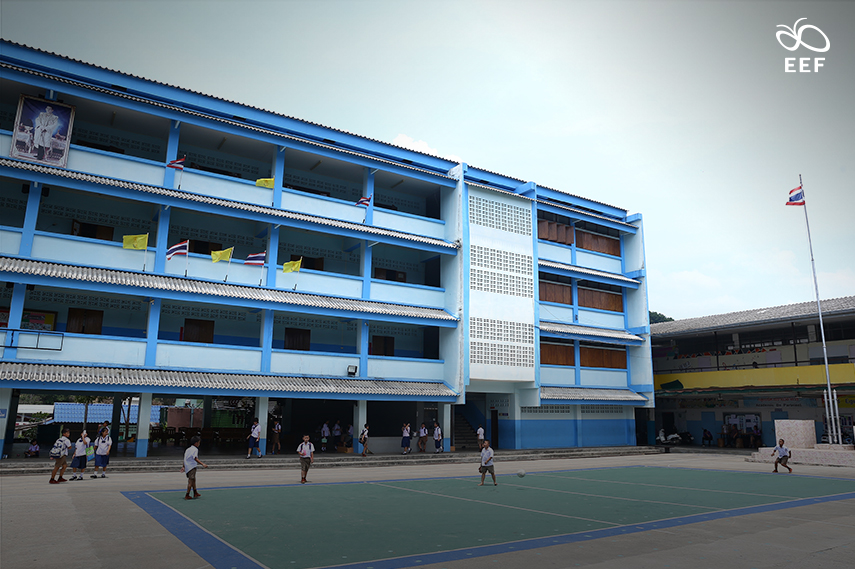
The Thailand Zero Dropout initiative, despite early success, has uncovered a cyclical pattern of educational disengagement: returning students are being continually replaced by new dropouts. Over 300,000 students re-entered the system in 2023, yet the overall number of out-of-school youth remains unchanged. To tackle this, solutions must extend beyond mere re-enrolment; structural reforms are needed to prevent further attrition. A future-ready educational system must be adaptable and inclusive, accommodating varied learning needs while ensuring continuous educational engagement. Nevertheless, societal misconceptions continue to frame the issue as an individual or familial failure, overlooking its deep-seated structural roots — inadequate policy frameworks. Without a paradigm shift, Thailand risks perpetuating cycles of exclusion and inequality; it is imperative to reimagine an educational system that proactively prevents exclusion, equipping all learners with the tools to thrive in an evolving world. Achieving this, as estimated by UNESCO, could increase Thailand’s economic growth by 1.7% annually, underscoring the broader impact of inclusive education.

The issue of children falling outside the educational system is multifaceted, with these children existing across a broad spectrum, each differing in lifestyle, worldview, and future aspirations. Traditionally, success and stability have been defined by adults in terms of education, employment, and family, yet this oversimplifies the varied experiences of children; it is crucial to acknowledge that these children do not fit neatly into predefined categories, but can shift across diverse shades. Addressing their needs demands a nurturing, flexible system grounded in local understanding, and it is essential to develop a system responsive to their diverse needs — all without rigid frameworks.

Through collaborations led by the Equitable Education Fund (EEF) Thailand, a range of flexible learning models has been pioneered, emphasizing that flexibility must be not only adaptable but also meaningful. The “1-School-3-Models” model exemplifies this approach, integrating formal (standard curricula), non-formal (tailored to specific learner groups), and informal (focused on individual interests and potential) learning pathways to meet diverse needs. This model ensures flexibility is not a rigid construct, but a dynamic environment where every student can thrive, with curricula adapted in terms of content, delivery, duration, and assessment.
Complementing this is the “Baworn — Opportunity Triad” model — derived from the Thai word “บวร,” symbolizing the three pillars of life: home (บ้าน), temple (วัด), and school (โรงเรียน) — that guide individuals across all stages. This model demonstrates that offering a holistic, inclusive education hinges upon continuous engagement from teachers, parents, and communities, with curricula adapted to real-world challenges and individual circumstances such as family, health, and daily activities, all while aligning with the 2008 Basic Education Core Curriculum. This ensures the learning schedule seamlessly integrates with students’ routines, whether through work or other commitments. These models clearly highlight that the responsibility for education is shared by the entire community, working together to drive systemic change. Through collective efforts, no student is left behind, as they are supported by a robust network dedicated to ensuring their success.
At the core, educational qualifications remain pivotal to future prospects, unlocking doors to employment and upward mobility. In Thailand, over a million children drop out of the educational system — a staggering number that only accounts for those officially identified, leaving many more unnoticed. To address this, a wave of innovative solutions is emerging, with the likes of online learning platforms joining traditional approaches like vocational training and community-based programs, introducing exciting new possibilities. As education moves beyond the confines of classrooms, technology bridges the gap, enabling learning anytime, anywhere. Flexible learning empowers students to take control of their educational journeys, ensuring they acquire both the qualifications and skills needed for a rapidly evolving world. This approach nurtures personal growth, prepares students for future success, and contributes to a brighter future for individuals and society alike.
Now is the time to transcend conventional educational models and embrace a flexible, inclusive system for all. This evolution requires not just new frameworks and innovative projects but also strong policy support. Policies shape the laws and regulations that ensure initiatives produce real, lasting outcomes. More than ever, we must build on the principles of “Education for All” and “All for Education,” transforming them into “Flexible Education for All” and “All for Flexible Education.” This shift is key to addressing the needs of children who have fallen through the cracks, while supporting initiatives like the Thailand Zero Dropout policy, ensuring that no child is left behind.

A pertinent example of this approach can be seen in Finnish vocational education and training (VET), which in 2018 introduced a reform that merged a competence-based system with flexible learning pathways to meet the changing demands of the workforce. This reform streamlined qualifications, reducing their number while expanding content to support individualized learning and faster responses to workplace needs. The modular qualification structure supports diverse groups, from young people to adult learners, the unemployed, and those seeking to upskill. This approach mirrors the Equitable Education Fund (EEF) Thailand’s efforts across Europe to create flexible learning pathways, emphasizing lifelong learning. Both the Finnish model and EEF initiatives share a vision of education evolving to meet the dynamic needs of learners and industries alike.
Flexible learning pathways are reshaping education, offering personalized, adaptable opportunities for learners of all ages to chart their educational journeys at their own pace. This approach enables individuals to access education in ways that fit their circumstances, whether through modular qualifications, online learning, or tailored curricula. However, for flexible learning to reach its full potential, it must be inclusive, ensuring every learner is equipped with the skills to thrive in a rapidly changing world.
All For Education is all about people; only when all is in for education is Education For All. Join the movement to reduce educational inequality. Support the EEF by donating to fund research, partnerships, and assistance for children, youth, and adults in need of educational support. Click the link to contribute today and help create a society where education is open and equal for all. Together, we can make a lasting impact.

